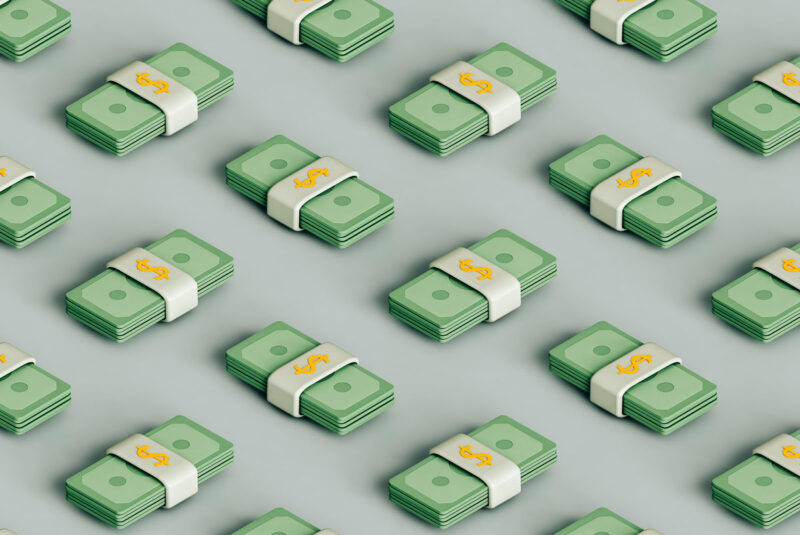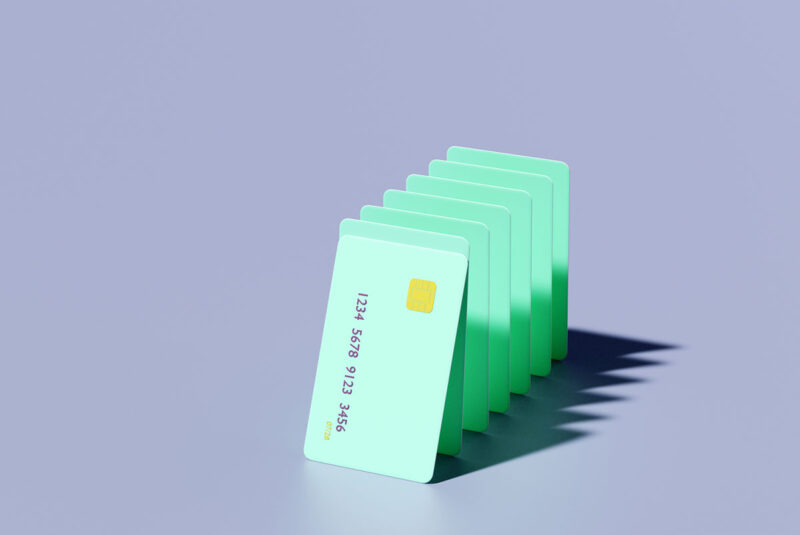When used correctly, credit cards can be an easy ladder to better credit scores and valuable rewards.
But, when used incorrectly, they can be a direct chute to debt and misery.
Whether you’re a total beginner — or a former credit card holder looking to avoid past mistakes — this article will explain how to properly use a credit card in six easy steps.
1. Understand How Credit Cards Work
Credit cards provide a “revolving” line of credit (as opposed to a non-revolving, static loan like a mortgage).
When you apply for a credit card, the bank looks at a number of factors, including your income, debt, and credit history. It’ll then decide whether to extend you a line of credit — and how much of one. This “credit limit” is the maximum amount you can spend on your card before paying some of it off.
Every time you swipe your card — at a store, hotel, restaurant, or website — you’re borrowing money from the card issuer and using more of your credit limit.
Credit cards are different from debit cards in several ways. Most notably, when you swipe, you’re not withdrawing money from your bank account; you’re borrowing money from the credit card company. That’s why credit cards help you build credit, and also why they can be an easy way to fall into debt.
When you visit MoneyTips, we want you to know that you can trust what’s in front of you. We are an authoritative source of accurate and relevant financial guidance. When MoneyTips content contains a link to partner or sponsor affiliated content, we’ll clearly indicate where that happens. Any opinions, analyses, reviews or recommendations expressed in our content are of the author alone, and have not been reviewed, approved or otherwise endorsed by the advertiser.
We make every effort to provide up-to-date information; however, we do not guarantee the accuracy of the information presented. Consumers should verify terms and conditions with the institution providing the products. Some articles may contain sponsored content, content about affiliated entities or content about clients in the network. While reasonable efforts are made to maintain accurate information, the information is presented without warranty.
2. Pay Your Bill on Time
At the end of the month, you’ll receive a credit card bill, which will include the following figures:
- Statement balance: The amount you spent in the previous billing cycle
- Current balance: The total amount you’ve charged to your credit card (including the present billing cycle)
- Minimum payment: The amount you must pay by the due date to avoid late fees
- Available credit: Your credit limit minus your current balance
The most important rule of responsible credit card use is to pay your bill on time. Late payments, which appear on your credit reports, are a red flag to lenders. And paying late means you’ll also owe late fees and interest.
To ensure you pay your credit card bill on time, set up notifications from within your credit card’s online account. For my credit card, I receive an email both when my statement is issued and when my due date is 10 days away.
While there, you can also set up payments to be automatically withdrawn from your checking account each month. This is a smart move if your bills are consistent and you’re nervous about missing payments (but you should check in to make sure they go through). Personally, I prefer to pay manually, as it gives me an opportunity to review the charges and avoid overdrafting my checking account.
3. Pay Your Bill in Full
If you’re wondering how to use a credit card wisely, here’s the key.
You probably already know that most credit cards have high-interest rates (aka annual percentage rates, or APRs). The average APR is 17%.
What you might not know is that you can avoid paying this interest entirely.
When you receive your first credit card bill, it won’t include any interest charges yet. That’s because almost all credit cards offer an interest-free “grace period” between the date your statement closes and the date your payment’s due. During this period, your purchases will not accrue interest (though cash advances and balance transfers are a different story).
Translation: If you pay the entire statement balance by the due date, you won’t owe any interest on your purchases. If you continue to pay the statement balance in full and on time — each and every month — you’ll never pay any interest at all.
That’s the secret of every smart credit card holder, because you get all of the perks of credit card usage, including security, rewards, and convenience, without paying a dime in interest.
On the other hand, if you only pay the minimum payment, you’ll rack up finance charges and could end up with a snowball of debt that becomes difficult to pay off.
You may have heard you need to carry a balance on your card to build credit. This is a total myth. Pay off your card in full each month, and you’ll see your credit scores rise — at no cost to you.
4. Keep Your Balance Low
Each month, your credit card issuer will probably report your behavior to the three major credit bureaus (most issuers do).
As the bureaus gather information about your credit card use, they will create credit reports for you (if they don’t already have them), which are used to generate credit scores.
Because of this, credit cards are one of the easiest ways to build credit. Making your monthly payments in full and on time will eventually lead to good credit scores, all other things being equal.
Also because of this, you should strive to keep the balance on your credit card low on your statement closing date. Not only does this mean you’ll be able to pay off your balance each month (and thus avoid interest charges), but it also means you’ll have a low credit utilization ratio.
This ratio, which represents the percentage of available credit you’re using, is one of the most important factors in your credit scores. You want to keep it as low as possible.
If you have a $1,000 limit on your credit card, and you’re carrying a $700 balance at the statement closing date, you’re using 70% of your available credit. That’s not a good look to creditors.
But if you have a $1,000 limit and a credit card balance of $200, your utilization is only 20% — which is much better.
Put simply, strive to only charge what you can pay off each month. And if your utilization will be very high, consider paying down the balance before the statement closing date if you want to improve your scores.
5. Monitor Your Spending
When you connect your credit card to a budgeting tool like Mint, it can actually provide a clear glimpse into your spending habits.
Unlike with cash purchases, which, for most people, get lost in a vast abyss, credit cards allow you to see how much you’re spending — and in which categories — month after month, and year after year. In fact, you don’t even need to use a special tool; credit card issuers may provide a year-end statement with similar information.
Keeping tabs on your bill has other benefits, too. If you notice a suspicious charge, all you have to do is contact your credit card company — most cards come with a $0 fraud liability guarantee, which means you won’t be on the hook for fraud or theft.
6. Earn Rewards
Besides building credit, one of the main reasons to use a credit card is the ability to earn rewards: either points or miles toward free travel, or cash back toward statement credits.
Although many of the best rewards credit cards are targeted at users with high credit scores, you’ll find some rewards on beginner credit cards, too.
Take care to avoid spending extra money to earn rewards or snag a signup bonus. That would negate the value of any rewards you earn!
Rewards cards aren’t right for everyone. If you’re looking to finance a large purchase, a card with a 0% introductory APR can be a good option. Or, if you’re already mired in credit card debt, consider transferring your balance to a new credit card with a 0% APR, then paying it off during the intro period. Here are our favorite balance transfer cards (without balance transfer fees!). If you’re nervous about controlling your spending, cut up the old card so you don’t end up with two cards with balances you can’t pay off.
What Should You Look for in Your First Credit Card?
Ready to dive in? Although which card you get is not as important as how you use it, there are a few things you should look for in your first credit card:
- Low fees: For your first foray into the land of credit cards, we strongly recommend choosing one without an annual fee. You should also make sure the other fees, such as foreign transaction fees for overseas purchases, are minimal as well if you plan to use the card in those ways.
- Targeted at you: There’s a card out there for almost everybody; you just need to know where to look. If you’ve never taken out a loan before, for instance, you should search for a credit card for people with limited credit. If you’re rebuilding your credit, on the other hand, check out these cards for bad credit.
- Ability to increase credit limit: When you’re just starting out, your credit limit is probably going to be pretty low (which means your credit utilization ratio will frequently be high). So find a card that offers an easy pathway to increasing your credit limit, thereby decreasing your utilization ratio and boosting your credit scores (most issuers allow you to request credit line increases).
How to Use Credit Cards: The #1 Rule
If you only remember one thing from this entire article, here it is: The best way to use a credit card is to only charge what you can afford to pay off at the end of the billing period.
By following this simple, albeit sometimes difficult rule, you will avoid the bad parts of credit card ownership (interest charges and fees) while benefiting from all the good parts (rewards, credit building, security, and convenience).
Frequently Asked Questions
To get a credit card, you have to apply for a credit card. You can typically find applications on card issuer websites, though you can usually apply in person at a bank — or at a store, in some cases — as well.
To actually be approved for the card, you have to meet the issuer’s requirements. That usually means your credit scores must be good enough for the card in question, though other factors, like your income, also play a role. Certain types of credit cards will require additional steps. Secured cards, for example, require deposits up front.
It’s safe to assume that nearly every chain retailer, restaurant, and service provider in America accepts credit cards to some degree. Most (but not all) small businesses do, too, though they’ll often have minimum purchase requirements for customers paying with cards.
Certain products and services may be harder to pay for with credit cards. For example, you can sometimes buy a car with a credit card, but it usually depends on the dealer’s policies.
We recommend only charging to your credit card what you can pay off in full by the due date. Paying off your full statement balance every month lets you avoid interest while making it easier to keep your credit utilization low (which helps your credit scores).
Just remember that you can still hurt your credit by accumulating too large a balance, even if you plan to pay it off before you’re charged interest. Your statement is generated well before your payment due date, and if your balance is high enough on the statement closing date, your scores may take a hit.



